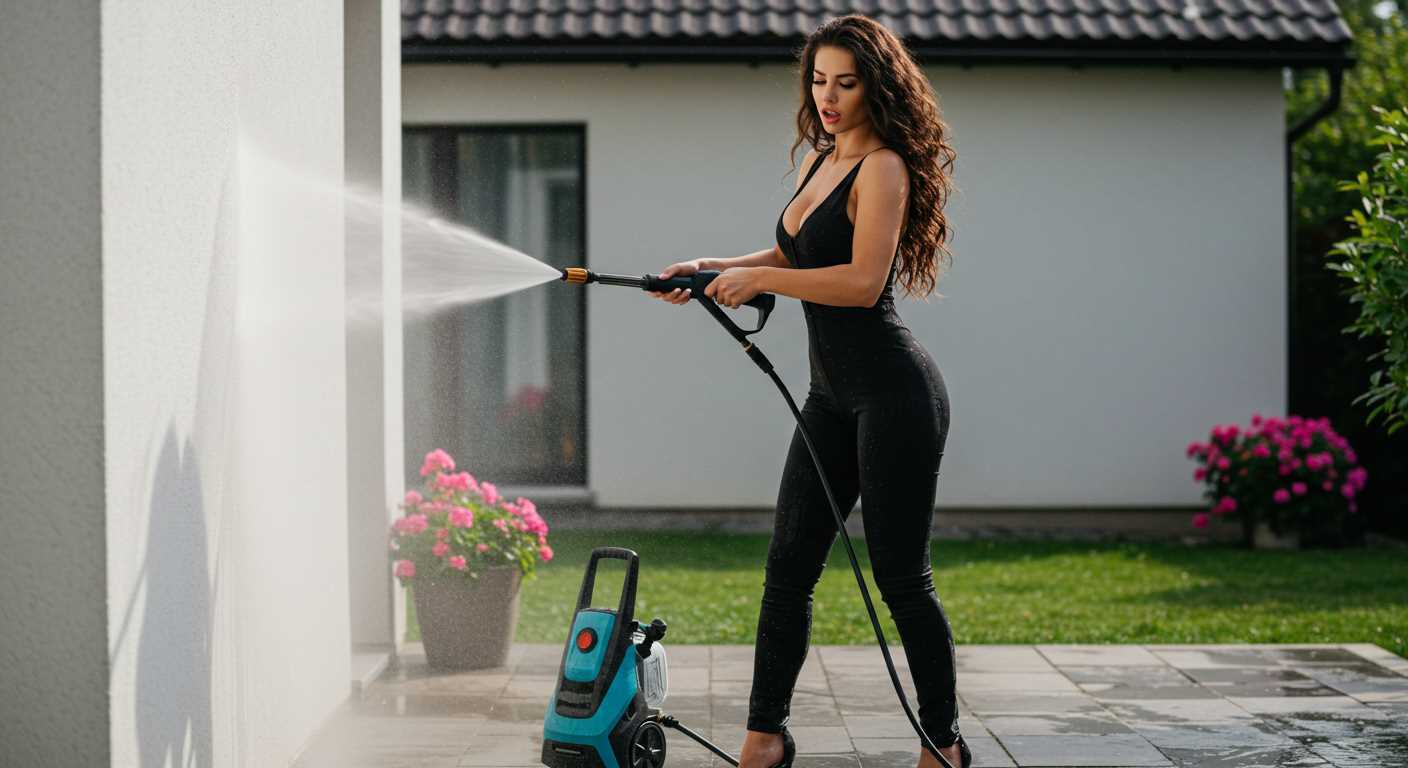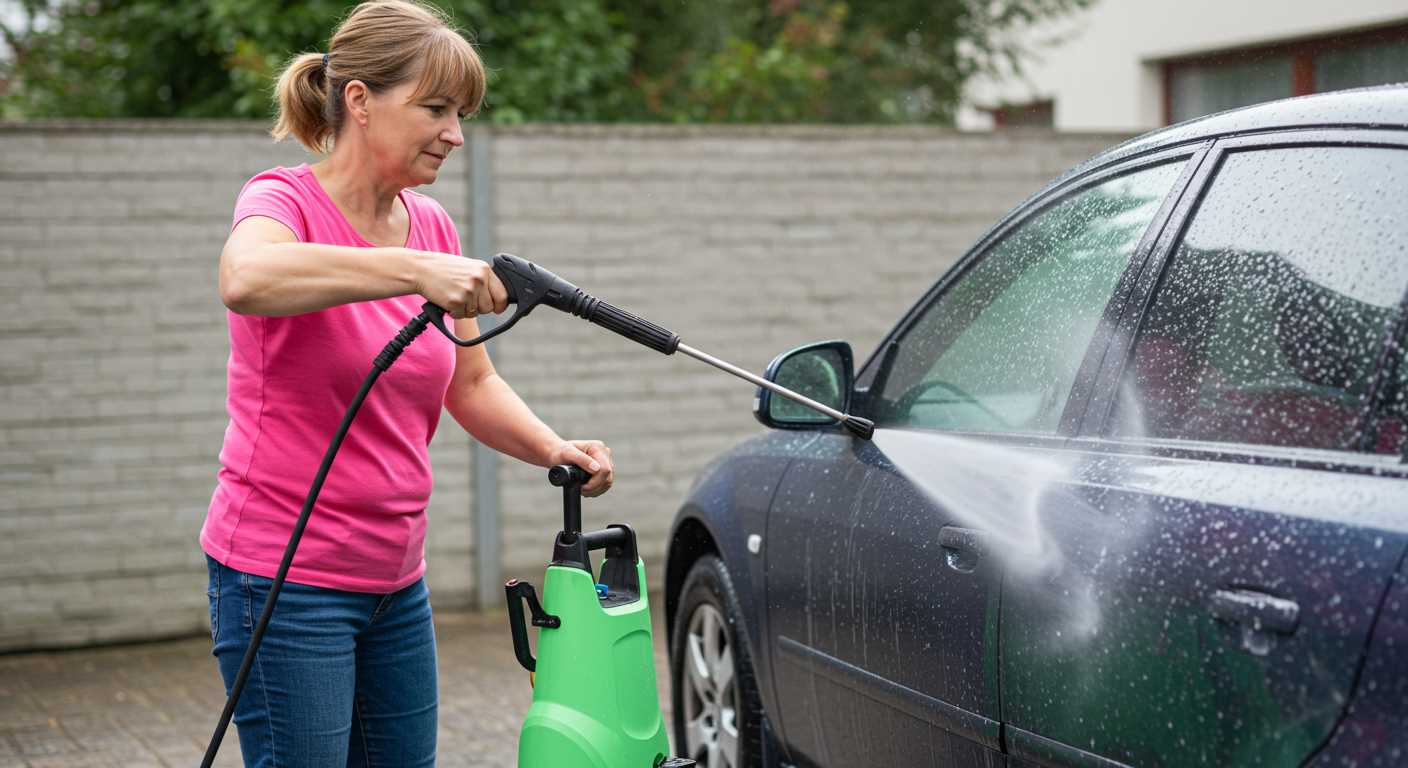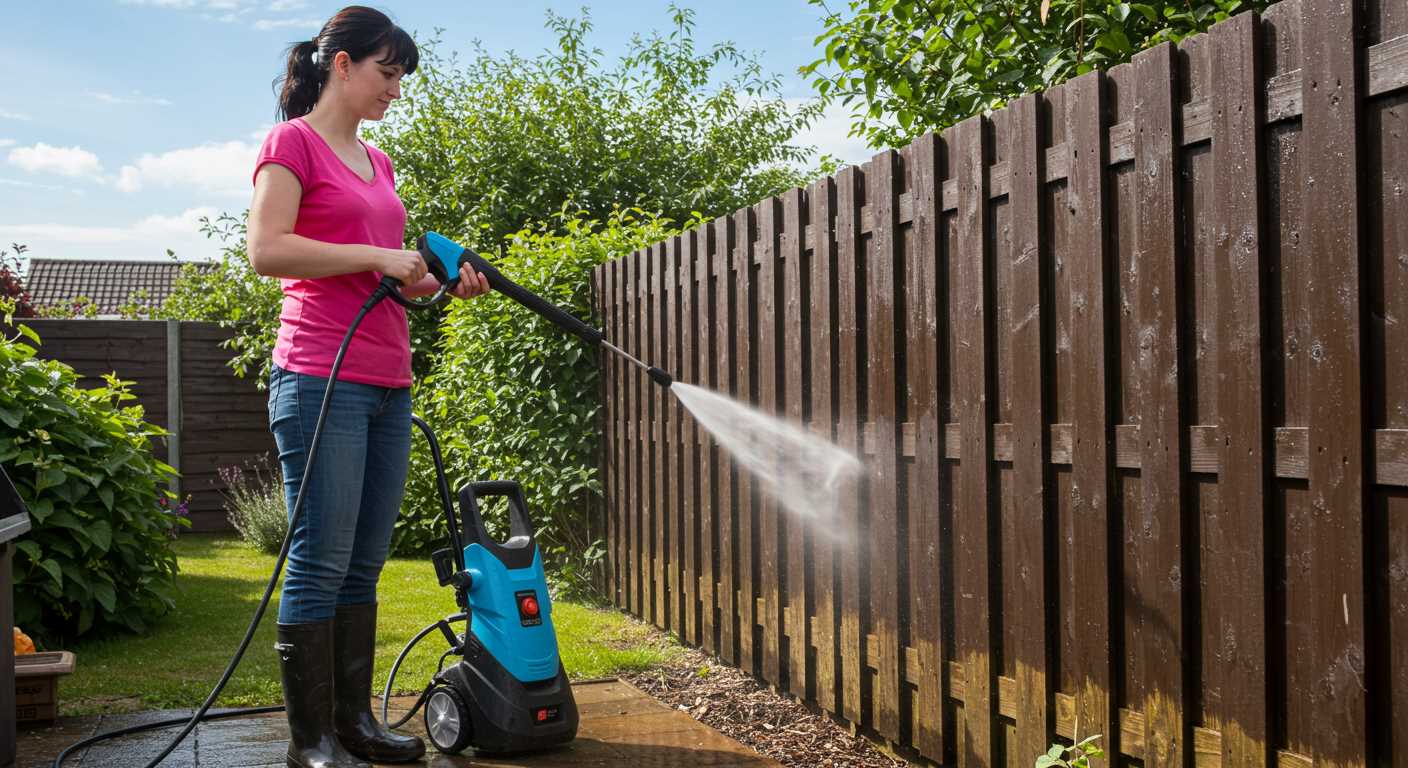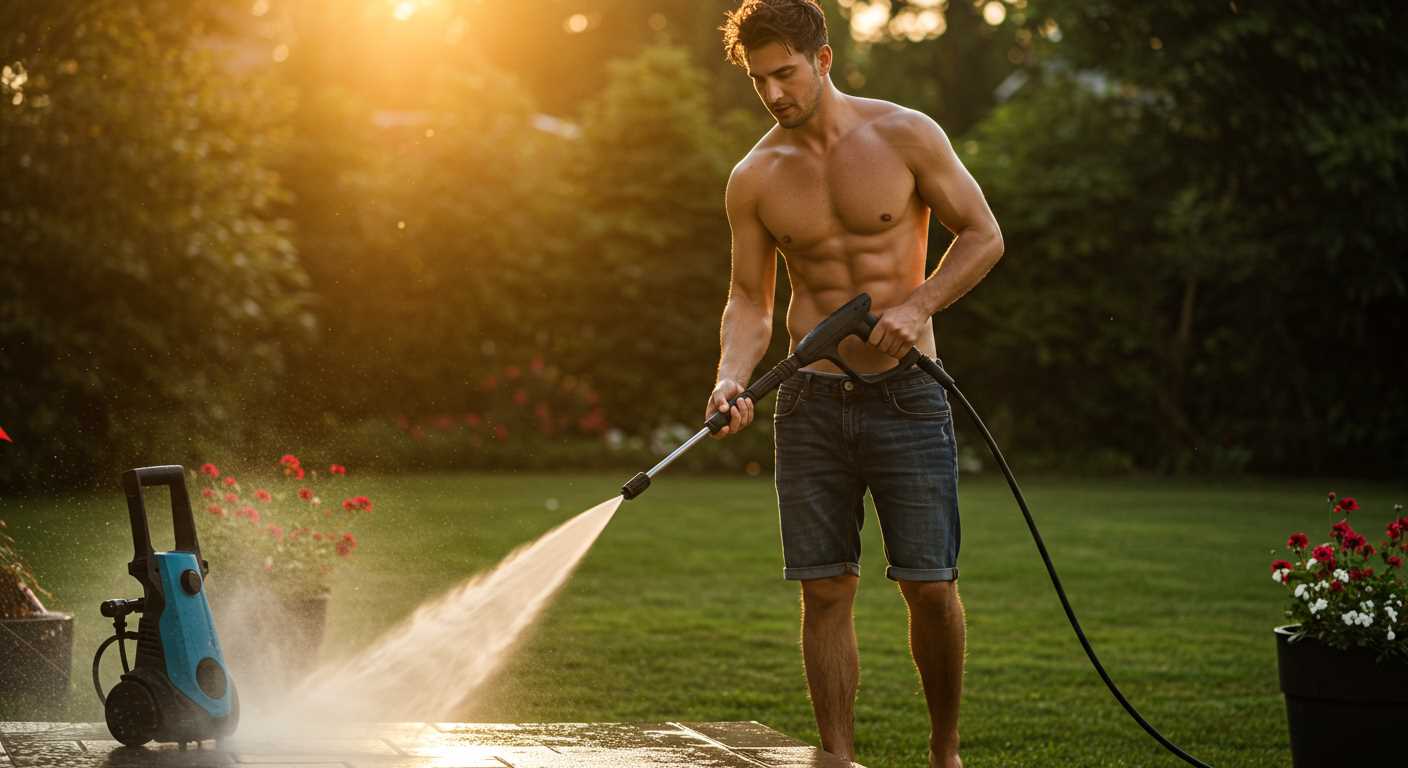



Begin by opting for a soap specifically designed for use with high-pressure devices. Ensure the product is compatible with the equipment to avoid damage or inefficiency.
Next, locate the detergent tank on the machine, typically found near the front or side. If absent, a suitable foaming attachment might be necessary. When employing the tank, pour the recommended amount of the cleaning solution, often indicated on the container, to achieve optimal performance.
Always mix the solution with water according to the manufacturer’s guidelines. This step is crucial for preventing residue buildup on surfaces and ensuring that the formulation activates correctly during application.
Finally, set the pressure levels appropriately for the type of surface being cleaned. Adjusting the nozzle ensures an even distribution of the solution while effectively lifting dirt and grime during the cleaning process. Following these directives leads to remarkable results and extends the longevity of both the cleaning agent and the machinery.
Choosing the Right Cleaning Solution for Your Equipment
Select a detergent formulated specifically for high-pressure cleaning tools. Generic household cleaners can create excessive foam, leading to clogs and impact machine performance. Look for biodegradable options that are safe for the environment and materials being cleaned.
Consider the type of surface to be cleaned. For instance, a solution designed for vehicles often has different properties compared to one for decks or patios. Stronger detergents can be effective on tough, grimy surfaces, while mild formulas work better for delicate items.
Compatibility and Concentration

Check compatibility with your machine’s specifications. Some brands recommend particular cleaning agents that optimise efficiency. Concentration matters; a more concentrated formula might require dilution, enabling better control of cleaning strength without risking damage to surfaces.
Additional Features

Invest in cleaners that include additives for specific tasks–like stain removers or mildew prevention. These features enhance performance and ensure satisfactory results. Furthermore, consider whether the product allows quick application and rinse, reducing the overall cleaning time while maintaining effectiveness.
Understanding Soap Dilution Ratios for Pressure Washing
Recommendations for dilution ratios typically range from 1:10 to 1:20, depending on the product and the task.
Common Dilution Ratios
- Light cleaning (e.g., dust and grime): 1:20
- Moderate stains (e.g., mildew and algae): 1:15
- Heavy-duty applications (e.g., oil and grease): 1:10
Testing Dilution Effectiveness
- Prepare a small area for application.
- Utilise the first dilution ratio.
- Observe the results before deciding on adjustments.
Adjustments are crucial based on surface type and level of dirt. Starting with a conservative dilution allows for tailored responses to varying cleaning needs. Always check the manufacturer’s guidelines, as recommended ratios can differ based on specific brands or formulations. Maintain a record of successful dilutions for future reference.
Preparing Your Equipment for Soap Application

Ensure the tank suitable for cleaning agent is properly attached and secure before commencing any operations. Check that all connections are tight to prevent leaks. Rinse any existing residue from the tank using clear water to avoid interference with the new formula.
Inspect the nozzle carefully; a low-pressure nozzle is ideal for applying cleaning solutions. Swapping to the correct nozzle enables optimal dispersion of the agent. If necessary, consult the user manual for guidance on compatible nozzles.
Next, run the machine on a low setting for a brief period to prime the system and eliminate air from the lines. This step ensures that the cleaning liquid flows smoothly once introduced. Pay attention to the pressure levels; excessive force can damage delicate surfaces.
Mixing ratios may vary based on the type of cleaner selected. Follow manufacturer instructions closely. For a uniform mixture, stir the cleaner thoroughly within the tank prior to use. Avoid any clumping by ensuring the cleaning agent is fully dissolved.
Finally, after preparing everything, test the system on a small, inconspicuous area to verify compatibility and effectiveness. Adjust settings or dilution ratios as necessary based on performance. This step allows for fine-tuning before tackling larger surfaces.
Connecting the Soap Injector to Your Pressure Washer

To effectively attach the detergent injector, begin by locating the injector port on the unit. Most machines have this port clearly marked in proximity to the high-pressure outlet. Ensure that the washer is powered off and unplugged before proceeding.
Securely connect the injector hose to the designated port. This will typically involve pushing the hose onto the nozzle until it clicks into place. Make certain there are no leaks at the connection points, as any air exposure can impact performance.
Next, if your model includes filters, verify that they are clean and free of blockages. A dirty filter may restrict the flow of the cleaning solution, leading to subpar results.
Utilising the Injector
Once connected, ensure that the valve is set to the detergent mode on your machine, often labelled as “low pressure” or “soap.” Check the manual specific to your equipment for exact details, as configurations can vary among manufacturers.
| Step | Action |
|---|---|
| 1 | Locate injector port |
| 2 | Attach injector hose securely |
| 3 | Check filters for cleanliness |
| 4 | Set to detergent mode |
Fill the detergent reservoir with the prepared cleaning solution. Adjust the dilution if necessary, depending on the level of grime present on the surface being cleaned. Test the system briefly to ensure there are no issues with supply or flow before commencing the washing process.
Steps for Mixing Cleaning Solution in the Pressure Washer Tank
Fill the tank only up to the recommended line to avoid overflow during operation. Consult your pressure washer manual for the precise maximum capacity of the detergent reservoir.
Prepare the cleaning agent by measuring the required amount. Use a clean container to ensure no contaminants affect the solution. Follow the manufacturer’s guidelines for dilution to avoid clogging.
Pour the cleaning mixture into the tank gently, allowing it to settle without splashing. Ensure there are no leftover residues or solid particles in the tank that could disrupt performance.
Secure the tank lid tightly after filling. A loose cap can lead to leaks and make the cleaning process inefficient.
Check the compatibility of the solution with the machine. Using unsuitable products may damage seals and internal components over time.
After mixing, perform a quick test at a low pressure to verify that the solution is being drawn correctly before increasing to the desired pressure level.
Techniques for applying solution using a high-pressure cleaner
Utilise a low-pressure nozzle when introducing the cleaning agent. This ensures an even distribution without risking damage to surfaces. A wide spray pattern is ideal for enveloping the area uniformly, contributing to thorough soil breakdown.
Initiate application from the bottom moving upwards. This technique allows for the solution to work effectively while preventing streaks and running. Always overlap spray paths slightly to guarantee that no spots are left untreated.
Allow the mixture to dwell for a few minutes on the surface before rinsing. This contact time maximises the product’s effectiveness in breaking down stubborn grime and stains.
Tilt the lance at a slight angle to enhance coverage and minimise excessive foaming. A straight-on approach can lead to bubbles forming excessively, which might hinder the clean-up process.
After application, rinse thoroughly using high pressure. Be certain to use a suitable nozzle for rinsing to ensure complete removal of the chemical residue. This step is crucial for both the cleanliness of the surface and the longevity of the cleaner.
For vertical surfaces, be mindful of the application technique to avoid runs. Apply from the top down in sections, ensuring that the solution remains in the intended area for optimal cleaning.
Post-soap application cleaning and rinsing procedures
Begin rinsing surfaces before the drying phase to avoid any residue buildup. Use a fan spray nozzle to provide even coverage, starting from the top and working your way down, ensuring that all detergent is thoroughly eliminated. Rinsing from the highest point ensures that any run-off does not re-soil already cleaned areas.
Rinsing Techniques
- Adjust Pressure Settings: If residue remains, increase pressure for a more vigorous rinse while being cautious not to damage surfaces.
- Maintain Distance: Keep the nozzle at least 12 inches from surfaces to prevent splatter or potential damage.
- Check Water Flow: Ensure optimal water flow throughout the rinsing process, as any blockages can hinder cleaning efficiency.
Post-Cleaning Maintenance
After rinsing, inspect surfaces to confirm all cleaning agents have been removed. If stains or streaks persist, repeat rinsing as necessary. Following this, disconnect equipment and clean the spray wand and nozzles to prevent clogging. Finally, store the detergent tank to avoid corrosion or damage to internal components.
Maintaining equipment after use will extend its lifespan and ensure optimal performance for future projects. Frequent checks on hoses and connections for leaks is advisable, and in cold climates, proper winterisation will prevent freezing damage.
Common mistakes to avoid when combining detergent with high-pressure equipment

Avoid using concentrated formulations directly in the tank. Always follow the manufacturer’s recommendations for dilution ratios; using more than necessary can lead to excessive foam and clogging.
Never neglect to test the detergent on a small, inconspicuous area before proceeding. This ensures compatibility with the surface and prevents potential damage.
Incorrect connection of the soap injector can result in ineffective cleaning. Ensure that all fittings are secure and compatible with your system to allow for proper flow.
Ignoring the type of surface being cleaned
Using a product not suited for specific materials, such as wood or delicate glass, can cause harm. Select formulations formulated for the intended surfaces to avoid degradation.
Timing and application technique errors
Applying cleaning agents in direct sunlight can lead to drying and streaks. Work in shaded areas or during cooler parts of the day for optimal results. Additionally, using an inappropriate nozzle or spray pattern can waste detergent. Choose a lower pressure setting or a fan spray for broad coverage without damaging surfaces.
Finally, ensure thorough rinsing after applying the cleaning solution. Residue left behind can attract dirt faster and affect the longevity of cleaned surfaces.








